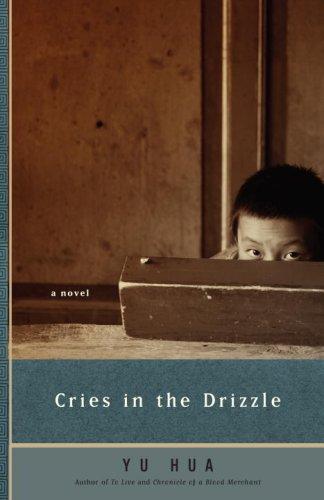
Cries in the Drizzle
کتاب های مرتبط
- اطلاعات
- نقد و بررسی
- دیدگاه کاربران
نقد و بررسی

August 6, 2007
In its first English translation, the debut novel by Yu Hua (author of the subsequent novels To Live
and Chronicle of a Blood Merchant
) depicts a family's life in the Zhejiang province of Maoist China during the 1970s. At both the core and outskirts of the family is narrator Sun Guanglin, a middle son who is given up for adoption and returns, five years later at age 12, after tragedy befalls his adoptive family. The narrative flits between time and space to create the landscape of Sun Guanglin's youth: his family's home burns down shortly after he returns, a local wedding takes on macabre overtones, a death in the family leads to ill-fated homespun opportunism and family loyalty is fleeting. As memories converge, the line between fantasy and reality blurs, leading Sun Guanglin to observe, “Our lives after all, are not rooted in the soil as much as they are rooted in time.... Time pushes us forward or back, and alters our aspect.” Though the fractured structure has its disjointed moments, Barr's translation perfectly captures the ebb and flow of a community on the brink of change.

September 1, 2007
Originally published in Taipei in 1992, this latest from Yu ("Chronicle of a Blood Merchant") details the Sun family's tumultuous experiences in rural China. The novel is narrated by Sun Gaunglin, the middle son of Sun Kwangtsai, and presented in a series of loosely connected vignettes. One of the early tragedies befalling the family is the youngest son's death after he appears to have saved his eight-year-old companion from drowning. When news of the boy's evidently heroic action is announced, the father develops visions of grandeur, but they are soon quashed when he is arrested over a matter relating to the family of the rescued child. The middle of the novel is filled with background information, while the last third focuses on the five years Sun Guanglin spends in another town after being sent away to be "adopted" by a childless couple at the age of six. As in his novel "To Live", Yu's writing here is most definitely not upbeat. Yet even among the work's more emotionally difficult moments, Yu manages to sprinkle in some sardonic humor. Not for everyone, but readers who can appreciate the universal themes of hardship and survival will definitely find this story worthwhile. For larger public and academic libraries.Shirley N. Quan, Orange Cty. P.L., Santa Ana, CA
Copyright 2007 Library Journal, LLC Used with permission.

October 15, 2007
Sun Guanglin is only six years old when his parents send him to live with a solider and his sick wife who cannot have a child of their own. Six years later, after the soldiers tragic death, Guanglin is forced to find his own way back to his family. His homecoming, in the midst of a devastating fire that destroys his familys house, is not what he had hoped for. His family ostracizes him, and in turn, he withdraws from them. When his younger brother, Guangming, drowns saving another boy, his father, Sun Kwangtsai, becomes unhinged, first certain that Guangming will be acknowledged as a state hero, then attacking the family of the boy he saved when they refuse to offer him monetary recompense. After a stint in jail, Sun Kwangtsai returns a changed manbut not for the better. Interspersed with the family tragedy are lighter vignettes, such as Guanglins sometimes embarrassing and awkward sexual awakening. Moving backward and forward in time, Huas novel offers a vibrant portrait of one boys coming-of-age.(Reprinted with permission of Booklist, copyright 2007, American Library Association.)

























دیدگاه کاربران